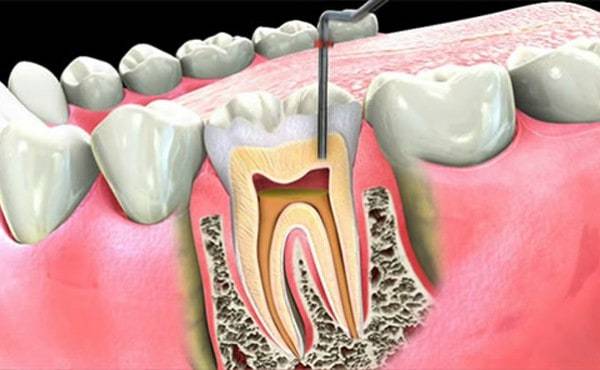
Root Canal Treatment
A root canal treatment removes the pulp or nerve of a tooth that has become inflamed due to a large cavity or crack in a tooth. The actual “root canal” is the term for the natural cavity located in the center of a tooth. The tooth’s nerve and the tooth’s pulp, or soft area within the canal, are also located within this area. During a procedure, both the nerve and pulp are removed. Then the inside of the distressed tooth is cleaned and sealed. Removing the nerve will not impact the functionality or health of the tooth. Its sole function is to provide sensory of hot and cold.
Who needs a root canal?
This process is necessary when a tooth becomes badly decayed and infected, or sometimes it is needed due to a large crack in a tooth. Signs and symptoms indicating that you may need a root canal include severe toothache, prolonged sensitivity to hot and cold, darkening of the tooth, and swelling and tenderness in the nearby gums.
Process details
An X-ray is taken as the first step of the root canal procedure. This allows your dentist to see the shape of the root canal, and ensure there are no signs of infection that have reached the bone. A local anesthesia is then applied to numb the area. Although numbing may not be necessary when the nerve is dead, it is typically still used to help ensure the patient is not in pain during the procedure. A rubber dam is then placed around the infected tooth in order to keep it dry and free of saliva. A small access hole is drilled into the tooth, and special files are inserted to scrape and scrub the sides of the root canals. This results in the nerve, the pulp, and any bacteria or debris being removed and flushed away. Finally, the tooth is sealed. Depending on the level of decay and potential infection, a second office visit may be needed. In these cases, your dentist will treat the infection and make sure everything is healed before sealing up the tooth. Of course a temporary filling would be used so you could function as normal until your follow up visit. Some other restoration techniques may be required to restore the tooth to full function, especially in cases of extreme decay.

With access to